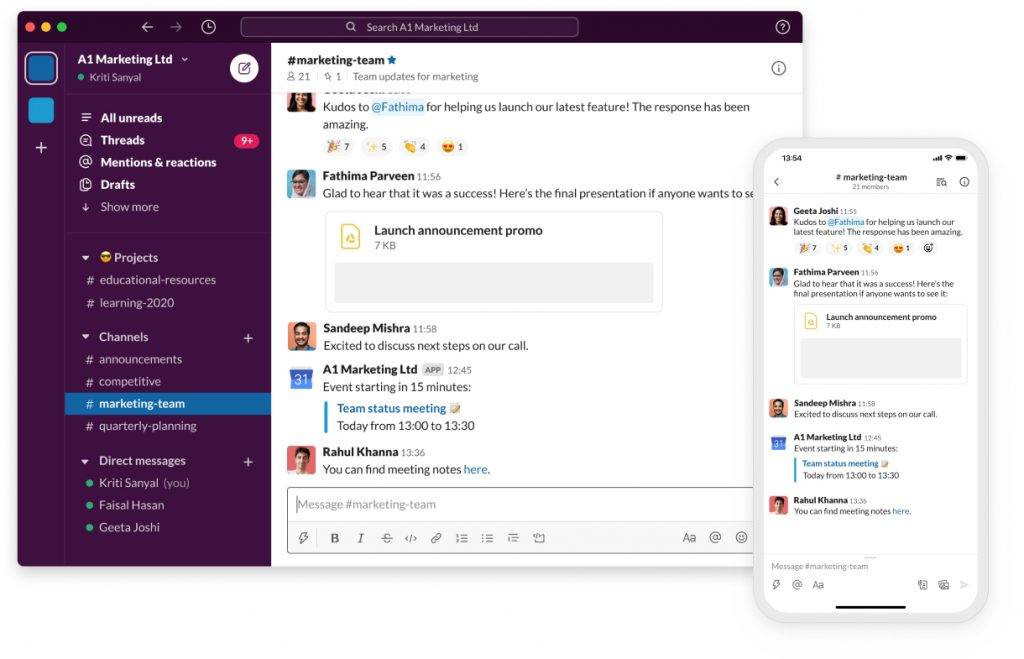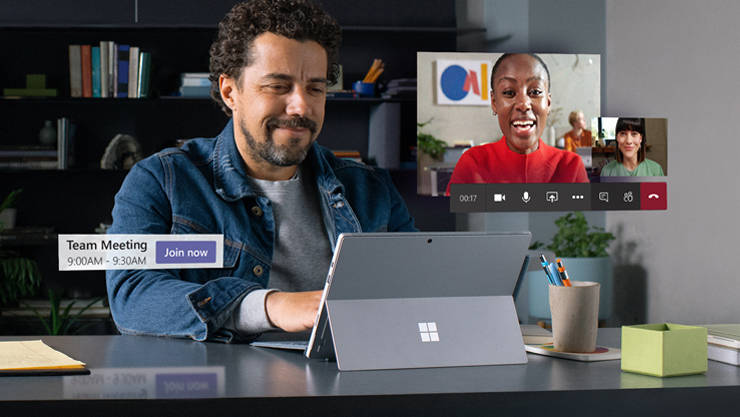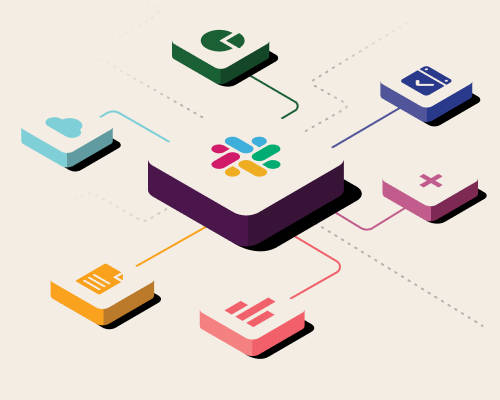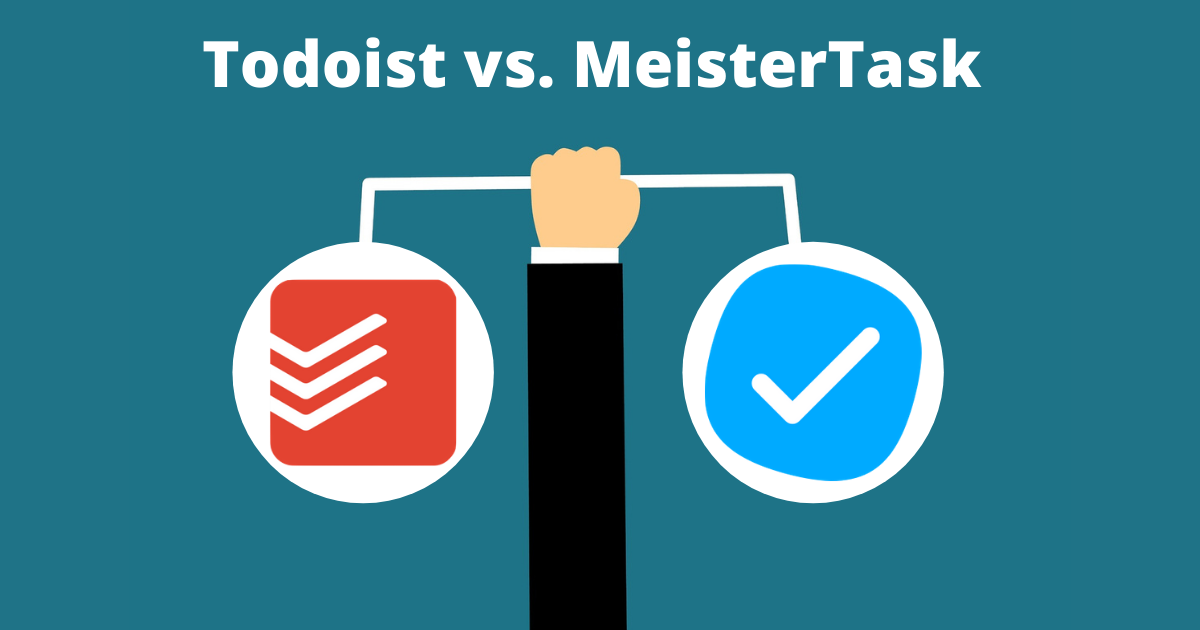For effective communication between employees of an organization, emails aren’t the best way. While they are of course helpful to formalize things, they aren’t efficient for brainstorming, discussing some concerns, or random discussions. And with the remote work becoming mainstream, workplace communication has become more important than ever.
Related read: COVID-19: The Ultimate List of Free Software and Resources
That’s where collaboration software comes in; these products allow employees to message each other, make a voice / video call, share their screens among a slew of things to manage their tasks quickly. And the two software that dominate this category are Microsoft Teams and Slack.
Since its launch in 2017 Microsoft Teams took only about 3 years to reach the 10 million active users mark. Slack achieved the same in six years. Amidst the ongoing pandemic, both software have seen a surge in their usage. On the surface, both applications look alike as they offer similar features and benefits, but if you dig deeper, then you’ll spot the differences between both.
This article focuses on such points of difference to help organization and / or employees make an informed decision about the workplace communication application best suited for their requirements.
Table of Contents
Microsoft Teams vs Slack: Messaging
Microsoft Teams and Slack have similar messaging capabilities. Both support traditional forms of texting and tagging features. Users can even add GIFs on both platforms. The difference lies in the approach with which these software let you add GIFs.

In Slack users need to write a command: “/giphy image name.” This command is then executed to enter the GIF in the chat. Microsoft Teams is more robust about this. It has direct buttons and menus to introduce GIFs and access even more if required. Slack however, does provide an option of using third party chat apps like Bitmoji, etc,, they are not easy to use via the interface.
Then again, the interface is more customizable on Slack. Users can switch between multiple themes and set specific colors to create a beautiful workspace. On the other hand, Teams offers a basic dark and light theme with high contrast.
Microsoft Teams vs Slack: Pricing
Both platforms offer free feature plans for small businesses and enterprises that cannot invest a lot of money. They also have a huge array of premium plans as well.

Starting with Slack, it offers
- unlimited public and private channel
- 5 GB of storage
- and 10 app integrations in its free pack
There is no limit to the number of users in this plan. And they can access message history up to 10,000 entries.
The different premium plans it offers are as follows:
- The Standard package, when billed annually, costs around $6.67 for each member for 1 month. Each user gets 10 GB of storage with unlimited app integrations and can check the entire message logs. Other functions like guest access, screen sharing is also included here.
- The Plus plan allows 20 GB of storage per user and Slack bills it at $12.50 for one member for 1 month.
- It also offers an Enterprise Grid pack with 1 TB storage per user. Buyers must check in with the Slack customer department for billing details of this plan.
Teams’ free plan has a limit of up to 300 users. The platform offers:
- guest access
- unlimited messages
- screen sharing
- over 140 app integrations
- 2GB of storage per user
- 10GB of common storage
It has two premium packages:
- The first is the Office 365 Business Essentials plan which allows the general limit of 300 users as per the free plan but stretches the storage space limit to 10 GB for one license. The other attributes available with this plan include Exchange email hosting, Microsoft support, OneDrive integration, and the ability to record meetings. If billed yearly, the monthly cost of this plan is $5 for one user.
- The other one is the Office 365 Business Premium plan which puts no restrictions on user numbers and storage. If billed yearly, the monthly cost of this plan is $20 for one user. ‘Enforced multifactor authentication’ is one of the few extra features offered by this plan.
Microsoft Teams vs Slack: Storage
In the free plans, we see Teams dominate over Slack with storage access.
In Slack, an unlimited number of users get only 5 GB of storage memory to do all the tasks. There is also a 10,000 message cap which users can remove via the premium plans only. Users can buy more storage space even up to 20 GB per user by the paid plans.

In Teams, however, each user gets a 2 GB storage space up to 300 users and a 10 GB common storage for the team. Also, functions like screen sharing and guest access are available. This increases the productivity of employees.
Teams gives smaller enterprises a chance to use all the premium and essential features of the workspace without paying anything. Users can also upgrade to a 1 TB storage for their enterprise with unlimited user storage if necessary, via the premium plans.
Microsoft Teams vs Slack: Integrations
Both Teams and Slack use a number of bots and applications to improve the experience of using their apps.

Slack clearly wins the number of integrations a platform can provide with around 1,500 apps to integrate. Though Teams cannot offer a huge roster like Slack, it seamlessly integrates Office 365 in its interface to provide users a smooth experience and workflow.
Microsoft Teams vs Slack: Helper Bots
On both platforms, users will find bots; for Slack, it is the Slackbot and for Teams, it is the WhoBot and T-bot.
Slackbot (Slack)

Slackbot boosts a lot of productivity. Users can ask Slackbot questions about the platform and set reminders, and tasks on it. They may even use it to try out integrations and prepare different modules needed for their tasks. And you can also set its autoresponder, and while you can use it for to provide contextual inputs, people also use to set automatic responses which are funny.
T-bot (Teams)
Like Slackbot, T-bot in Teams too helps members by answering different questions about the platform. However, when it comes to the ‘WhoBot’ users will not be able to access it in the free version of the application.
WhoBot (Teams)
Microsoft uses its Graphing artificial intelligence framework to build the WhoBot. It answers questions about Teams and can even search for data in the intranet. What this means is that users now have the ability to analyze the data stored in the workspaces.
WhoBot can pull out files from the active directory and give clear relationships like who reports to whom, what tasks have been pending, where to pick-up pace, and cut some slack.
To access the bot, users can type /who in the command box at the top of Teams or click the ‘…’ icon on the left navigation menu to access Who.
AVA and MyHub (Teams)
Two vital free applications special to Microsoft Teams are AVA and MyHub. AVA is a reinforcement chatbot that can reestablish lost and erased content inside Office 365, and MyHub is a cloud administration application that permits clients to designate workspaces in strategy without the need for IT.
These applications can help administrators maintain a strategic distance from unnecessary overheads and offer clients the self-sufficiency required to support themselves.
Microsoft Teams vs Slack: Web conferencing
Audio and video calls are necessary for establishing modes of communication in the workplace. One of the key advantages of such workspaces is their ability to retain all communication within a single platform. They do so by providing all the calling and messaging features.

Slack’s free plan offers unlimited one-to-one video and voice calls. The Conferencing feature is not available in this plan. However, with an upgrade to premium plans, users can accommodate up to 15 callers on an audio or video call.
Once again Teams comes out ahead with its superior feature integrated communication setup. On every tier, including the free one, a group call, be it audio or video can accommodate up to 250 people. Here users get an option to record meetings which is also non-existent in Slack.
Users can even share screens in the free plan without any hassle. This, therefore, helps people to meet virtually and complete tasks where team-oriented work is common, and conferencing is an essential part of the daily schedule.
Bottomline
| Capabilities | Microsoft Teams | Slack |
| Max users | 300 per organization | Unlimited |
| File storage | 2 GB / user and 10 GB of shared storage | 5 GB total |
| Guest access | Yes | No |
| 1:1 and group online audio and video calls | Yes | Yes |
| Screen sharing | Yes | No |
| Channel meetings | Yes | No |
| Two-factor authentication | No | Yes |
| Chat messages | Unlimited | 10K most recent messages |
| App integration | Unlimited | 10 |
If the organization and its employees want a familiar look and feel of the interface which is user friendly, and want a lot of application integrations that work smoothly with individual machines, Slack is the option to go for. It also offers a lot of customizability.
Slack however, lacks most of the features when it comes to communications. In comparison, Microsoft Teams is a much more complex and well-integrated platform. It has a lot more functionality and can perform complex operations like graph searches using AI. The superior audio-video conferencing facilities help companies dispersed around the world connect and decide upon tasks and complete deadlines. Plus, if users already have Office 365, connecting Teams with it increases a lot of features. Also, from an economic perspective Teams is cheaper than the lowest Slack plan if an organization wants to opt for premium plans.

In sum, both Microsoft Teams and Slack are equally capable applications, and choosing between them boils down the organization’s needs. Which one would you go for? Let us know in the comment box below.






